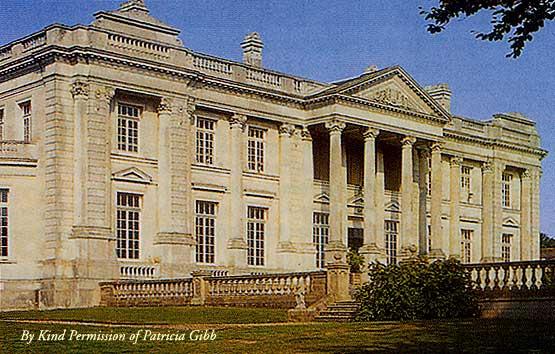
The entrance facade
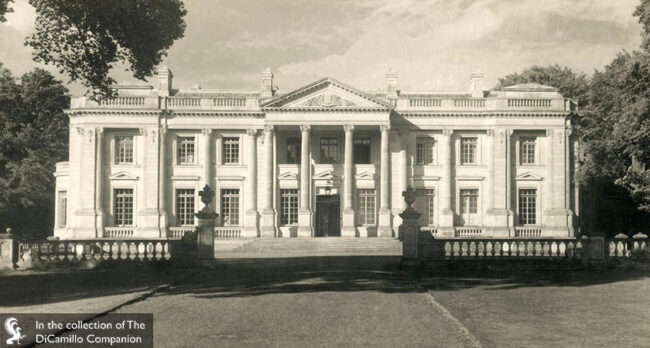
The entrance facade from a circa 1928 postcard
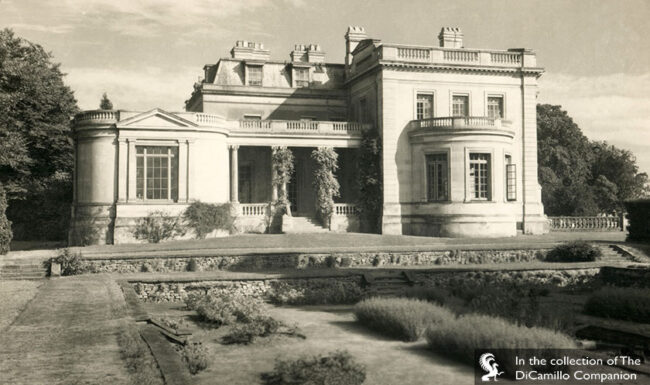
Side facade from a circa 1928 postcard
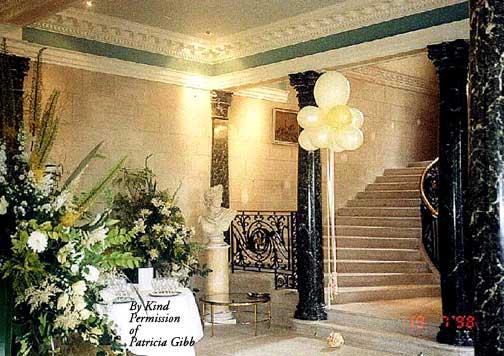
The hall
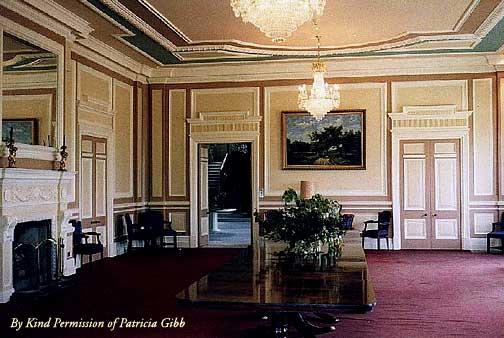
The Music Room
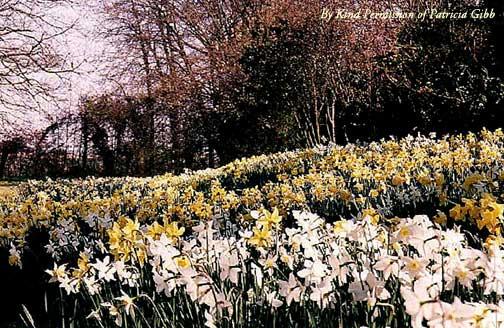
The garden
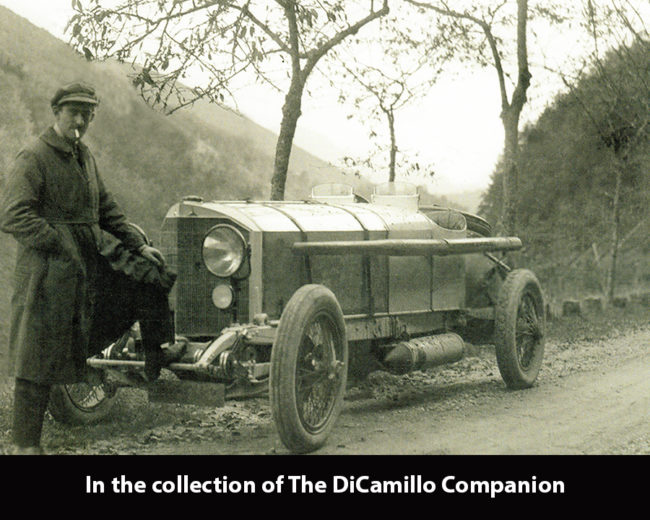
Count Louis Zborowski with Chitty Bang Bang I, circa 1922.
Earlier Houses: The Higham Estate was ceded to the de Hegham family by Edward II in 1320. The family, then courtiers to the king, held lands south of Canterbury stretching as far as Wingham to the east and Upper Hardres to the west, and probably had a manor house located on, or near, the site of the current house. These vast estates passed in 1534 to Thomas Culpepper of Bedgebury, famous author and herbalist during the reign of Henry VIII; evidence of his early experimental plantings can still be found today within the kitchen gardens at Higham. Culpepper was later beheaded after an alleged affair with Catherine Howard, fifth wife of Henry VIII. The property was later owned by Sir Anthony Aucher, who passed it on to his son, Sir William, who died without issue in 1726. Sir William's sister, however, had a daughter who inherited Highham and married Ignatius Geoghegan in the mid-18th century, and it was this couple that created the look of the current house.
House & Family History: In 1768 Mr. and Mrs. Geoghegan commissioned a massive rebuilding of Higham, including the addition of the imposing Neoclassical four-column Portland stone façade, which was carved by hand onsite. In July 1765 the nine-year-old Wolfgang Amadeus Mozart visited Higham and performed on the piano in the Music Room. The young child prodigy was touring Europe with his father, Leopold, who decided to pay a visit to Higham Park, probably because it was known as a favorite gathering spot of the nobility, who came here for the horse racing. But Mozart wasn't the only famous person to visit Higham; in the early 19th century Jane Austen, together with her sister Cassandra, visited Higham (their outings are mentioned in Cassandra's jottings). In 1781 James Hallet purchased the Higham Estate; in 1823 the estate changed hands again, passing to James Hallet's nephew, Charles, who assumed the surname Hughes-Hallet and married Frances Anne, daughter of Sir Edward Katchbull of Mersham Hatch. The Rev. James Hughes-Hallet lived in the house from 1846. The London banker William Gay purchased the estate in 1901. Gray was a great collector of rare plants and orchids; under his ownership Higham's Edwardian gardens were completed as seen today and the Italian Water Garden, designed by Harold Peto (completed in 1903), and the portico (completed circa 1905), were added. In 1910, following the tragic death of her husband (William Elliott Morris Zborowski, a New Jersey-born man who claimed, without evidence, to be the descendant of Polish counts), Countess Margaret Zborowski, the very wealthy granddaughter of William Backhouse Astor, Sr. (she owned seven acres of Manhattan, including several blocks on Fifth Avenue), purchased the Higham Estate for £17,500 (equivalent to approximately £7 million in 2018 inflation-adjusted values using the labour value commodity index). Her intent, to provide a stable English family home from which to educate and raise her son, was sadly short-lived; after spending £50,000 on refurbishments, the countess died three months after purchasing Higham (she suffered ill health throughout her life). Her son, Count Louis Vorrow Zborowski, at just 16, inherited great wealth and a burning ambition—to follow his late father as a race car driver. Because of Count Louis, during the 1920s Higham became the unlikely venue from which the world's most ambitious racing cars were conceived and built. The world's first aero-engine racing cars were the brainchild of the count—his first racing car was a 1921 chain-driven lengthened Mercedes chassis with a 2.3-liter six-cylinder Zeppelin Maybach aero engine that he called Chitty Bang Bang I (see a photo of the count with Chitty I in the "Images" section). The name is believed to have derived from the lewd military slang used by the former World War I soldiers that Count Louis employed to build and maintain his cars at Higham. A “chit” was slang for the official piece of paper that gave a soldier leave from the front to visit Paris, where he could go to a brothel and get a “bang.” The young Ian Fleming is believed to have been a regular visitor to the count's motoring events, traveling from London to Dover on the 007 bus, and it seems likely that Fleming's fantasy book and film, "Chitty Chitty Bang Bang," was inspired by events he witnessed at Higham (as an adult Fleming was a frequent house guest at Higham, then owned by Walter Whigham, chairman of the merchant bank Fleming & Company). The count's well-chronicled racing exploits, then typical of the amateur status of drivers during the early part of the 20th century, were undoubtedly responsible for helping to attract the aristocracy to the sport in later years. Count Louis's racing green, for example, is now universally accepted as the standard livery for classic British racing cars. The count died in 1924, at the age of 29, after hitting a tree while racing for Mercedes-Benz at the Italian Grand Prix at Monza. The latest creation from his Higham workshops, the Higham Special (aka Chitty 4), was passed on to his friend, John Parry-Thomas, who later took it to the Pendine sands in South Wales, where it broke the world land speed record. Count Louis's enormous resources (he was the fourth richest under-21-year-old in the world when his mother died in 1911 and left him a huge fortune of around £11 million—approximately £4 billion today) and his passion for all things mechanical meant that he could also exercise his love for speed in other directions. The now-famous Hythe and Dymchurch Narrow Gauge Miniature Railway was born at Higham and originally circled the landscape gardens, where its Green Goddess engine would pull the carriages so fast the train would regularly topple off its track. The Higham Park Estate was sold in 1928 to Sir Walter Whigham, a merchant banker and governor of the Bank of England. Sir Walter was married to a French countess from the Saligoncic-Fenelon family (the Moët dynasty); they changed the name of the estate to Highland Court during the 1930s, remodeled the grand staircase in white Italian marble to resemble the staircase at the Ritz, Paris, and built the stableblock in 1932. It continued under this name while under the control of the War Office during World War II (1939-45) and during its tenure as the Gynecology Department of the Kent and Canterbury Hospital (from 1950). Highland Court Hospital closed in 1981, after which the house was unoccupied (subsequently falling into disrepair). In September of 1995, after 18 months of negotiations, Higham was purchased by local cousins Patricia Gibb and Amanda Harris-Deans for £1.5 million (they sold their respective houses to raise the necessary funds). The cousins resumed the original name and immediately began a painstaking and comprehensive restoration, which continued for 10 years. In late 2005 the 87-room, 24,000 square foot house, together with 25 acres, was sold for in excess of the £4 million guide price to a private couple. (We are grateful to Patricia Gibb for kindly contributing much of this history of Higham.)
Garden & Outbuildings: The Italian Water Garden's 250-foot canal, designed by Harold Peto in 1903, is reputedly the longest in England. A classical temple in the grounds (blown-up in the early 20th century by the 21-one-year-old owner of Higham, Count Louis Zborowski) was rebuilt in the early 21st century by Patricia Gibb and Amanda Harris-Deans.
Architect: Harold Ainsworth Peto
Date: 1901-03
Title: Daily Telegraph, The
Author: NA
Year Published: NA
Reference: Telegraph Property, Aug 28, 2004, pg. 6
Publisher: London: Telegraph Group Ltd.
ISBN: NA
Book Type: Newspaper
House Listed: Grade II*
Park Listed: Not Listed
Past Seat / Home of: SEATED AT EARLIER HOUSES: De Hegham family, 14th century. Thomas Culpepper, 16th century. Sir Anthony Aucher, 17th century. SEATED AT CURRENT HOUSE: Ignatius Geoghegan, 18th century. James Hallet, 18th century; Charles Hughes-Hallet, 19th century. William Gay, 1901-10. Countess Margaret Zberanska, 1910-11; Count Louis Vorrow Zborowski, 1911-24. Sir Walter Whigham, 20th century. Patricia Gibb and Amanda Harris-Deans, 1995-2005.
Current Ownership Type: Individual / Family Trust
Primary Current Ownership Use: Private Home
House Open to Public: No
Historic Houses Member: No